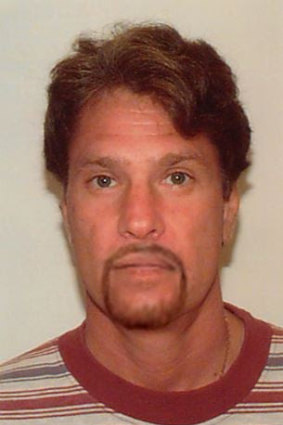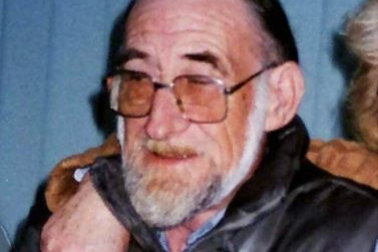This was published 8 months ago
A new witness and DNA profiles: Breakthrough in suspected Gold Coast murders
By Keira Jenkins
A Gold Coast man was chased by a car of people “brandishing weapons” before his suspected murder in 2002, police have revealed.

Iain Stewart Hogg disappeared in 2002.Credit: Queensland Police
Police say a witness has come forward with new information about the cold case suspected murders of Iain Hogg and Frederick Hugh Rosson, also known as Slim Johnson.
Investigators believe Hogg was shot and dumped in the Tweed River in northern NSW more than 20 years ago, but his body has never been found.
Detective Inspector Mark Mooney on Monday said a witness reported seeing Hogg being chased by three or four men in a white sedan into the underground car park of a Gold Coast apartment complex where the 45-year-old lived.
“The males were hanging out of the vehicle, verbally threatening Mr Hogg and brandishing weapons,” he said.
The sedan is believed to be a white Ford Laser or Toyota Corona.
Police believe Hogg was shot the next day in a Tweed Heads car park.
His red Toyota Celica was spotted on March 11 at the northern NSW car park, with witnesses saying they saw a group of people before there was a flash and a loud bang.
Three days after Hogg’s suspected murder, 67-year-old Frederick Rosson was shot dead at his property in Mount Nathan, Queensland.
Police believe he was killed over a nine-millimetre CZ handgun, Rosson had advertised for sale, which was subsequently stolen.

Frederick Hugh Rosson (also known as Slim Johnson) who police believe was killed four days after Iain Hogg in 2002.Credit: Queensland Police
Hogg’s Celica, which police believe was stolen, was seen near the property and found dumped at Palm Beach on the Gold Coast the following week.
Mooney said while the victims are not linked, ballistic evidence has indicated the same people are responsible for both alleged murders.
He said DNA profiles of “possible persons of interest” have been identified.
A $500,000 reward in both Queensland and NSW is still on offer for information leading to an arrest and conviction in the suspected murders.

Police are seeking information in relation to a vehicle similar to a white Ford Laser sedan or a white Toyota Corona sedan seen at the Sanctuary Lake Apartments in Currumbin about dusk on March 10, 2002.Credit: QPS
An opportunity for indemnity against prosecution is also being offered to any accomplice – not being the person who committed the murder – who first comes forward with information.
“This information could be vital in solving these murders,” Mooney said.
“It’s never too late for people to come forward, relationships and loyalties change, people who were once scared may no longer be.”
- AAP